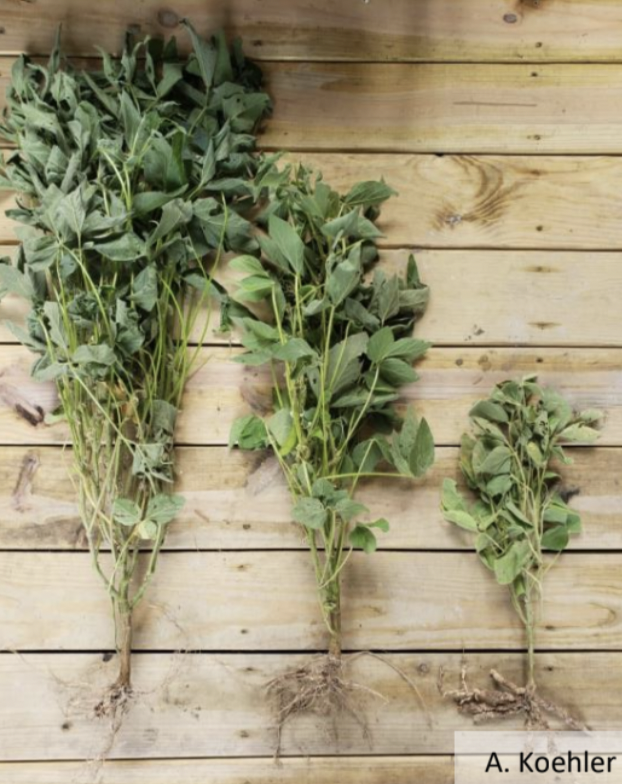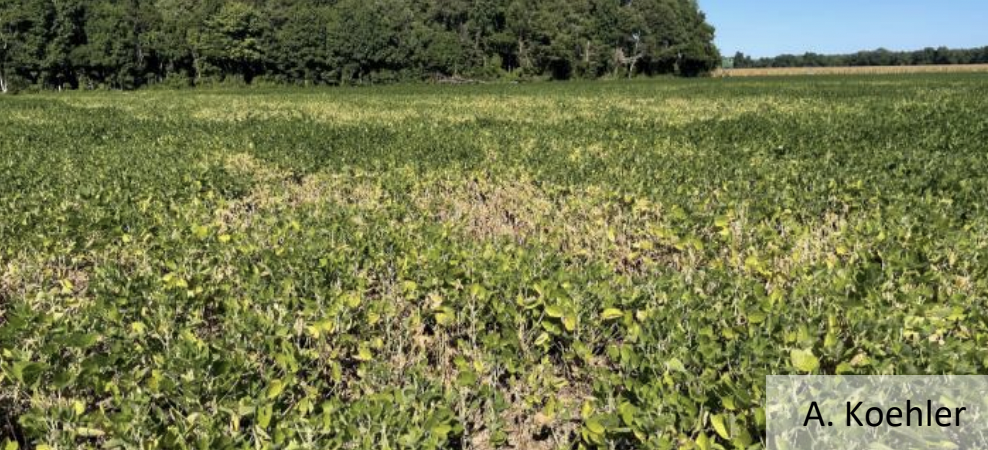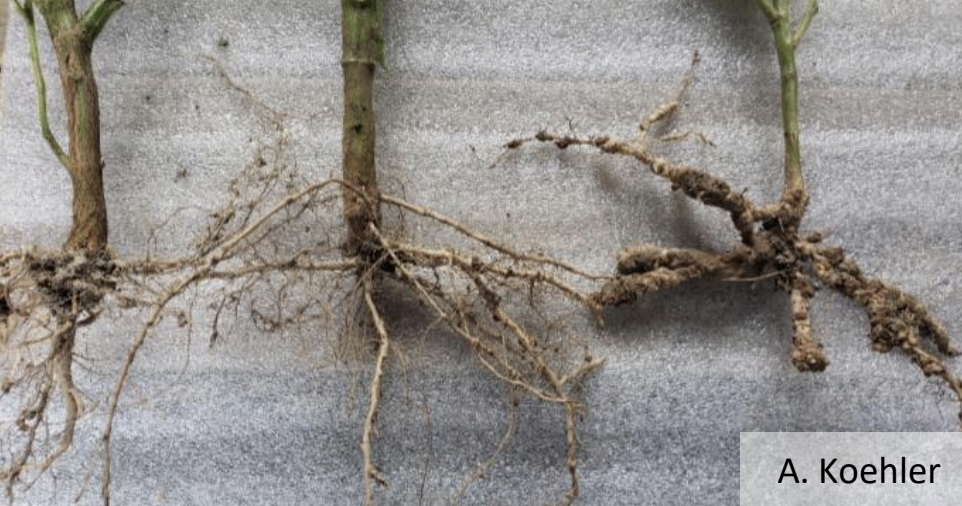
Fact Sheets And Publications
Root-Knot Nematode in Soybean
Pest Background
- Root-knot nematodes (RKN, Meloidogynespp.) are microscopic roundworms that feed on plant roots.
- M. incognita, the Southern root-knot nematode, is the most common RKN species in the region.
- Once RKN are established in a field, they are very difficult to fully eliminate and must be managed using an integrated approach.
Identification
- Above-ground symptoms can include stunting (Fig 1), wilting, chlorosis or yellowing of the leaves, decreased plant vigor, and patchy growth throughout the field (Fig 2).
- Symptoms of RKN can be confused with nutrient deficiencies and several other diseases.
- Roots of susceptible plants can be examined for the presence of swellings called galls (Fig 3).

Fig 1: Soybean plants from the same field
with various levels of stunting due to RKN

Fig 2: Field with widespread RKN causing yellowing
of leaves and premature death of plants

Fig 3: Soybean root systems with different levels
of galling from RKN
Management
- RKN is favored by sandy soils and has a wide host range, making crop rotation difficult.
- Fall soil samples monitor soil populations and types of nematodes present.
- Varieties with RKN resistance are primarily available in higher maturity groups (group V and above), but some group III and IV options are beginning to enter the market.
- Multiple nematode-protectant seed treatments are available. Results will vary among different products, growing seasons, and soil environments.
References
Crop Protection Network (2022, Jan 28). Root-
Knot Nematode of Soybean. Retrieved from:
https://cropprotectionnetwork.org/encyclope
dia/root-knot-nematode-of-soybean
Authors: Eboni Traverso and Dr. Alyssa Koehler
UD Cooperative Extension
This institution is an equal opportunity provider.
In accordance with Federal law and U.S. Department of Agriculture policy, Cooperative Extension is prohibited from discriminating on the basis of race, color, national origin, sex, age, or disability.
